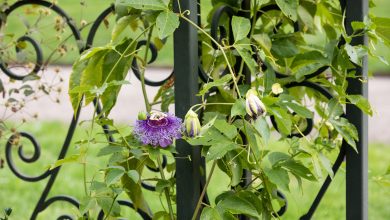Plant Mango: The Step-by-Step Guide you need to eat this delicious fruit [12 Steps]
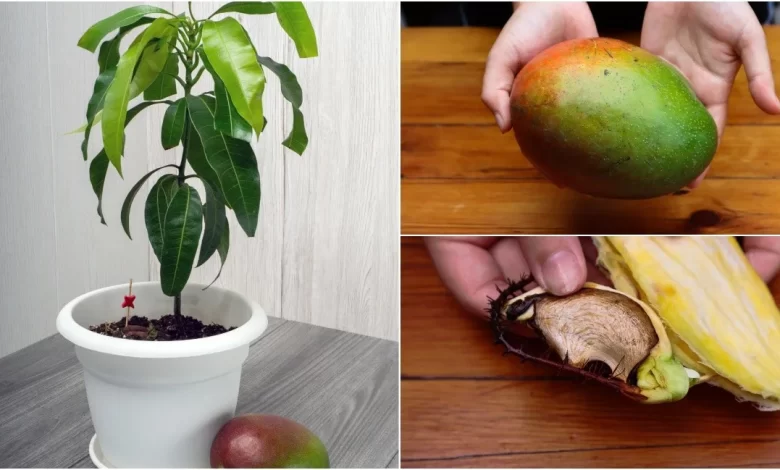
How to Plant Mango Step by Step:
- When? End of Spring and beginning of Summer.

- Where? It is sensitive to cold (Tropical tree) and needs a lot of light.
- How much can you measure? It can reach 40 meters in height, with a crown of 30m in diameter.
- How long does it take to grow? At 10 years old it can bear abundant fruit each year.
- How do we prepare the land? We till and remove weeds.
- How do we water? At first 1-2 times a week. Later it needs abundant water, constant but we will avoid flooding. The optimal pH ranges between 4.5 and 5.7
- When do we harvest? They flower from January to March and want 100-130 days for the fruit to mature.
- What good associations do you have? Avocado, papaya, and some citrus fruits, especially lime, lemon, and orange. As for vegetables, some that do not require much water such as potatoes or asparagus.
- What bad associations do you have? Vegetables that require sun and a lot of water generally suffer with a mango tree nearby.
- Plagues and diseases? Cochineal, fruit fly, flower moths, atracnose, powdery mildew of mango and dried mango.
ANDhe mango is, along with the banana, the most important tropical fruit in the world. Not only is it sweet and refreshing, but it is highly nutritious and provides a large number of benefits to the body.
Its popularity has caused a huge demand in the market, thanks to which we can count on mangoes almost all year round.
The mango tree, also known as manguifera, is relatively easy to plant, especially since it adapts effortlessly to different climates and types of soil.
Main benefits of mango
- They provide group B vitamins, vitamin A, vitamin C and different types of minerals such as phosphorus, calcium, magnesium and selenium.
- Consuming mango can help us fight constipation, improve digestion, reduce fluid retention, fight iron deficiency anemia, vision problems, and delay the onset of degenerative diseases.
- It also increases defenses and is involved in the formation of collagen, bones and teeth, and red blood cells.
- It favors the absorption of iron and, in adequate amounts, contributes to reducing blood cholesterol levels and good glucose control.
Most common varieties of Mango
Originally from India, mango cultivation has spread throughout the world.
Today we can find important mango crops in India, Indonesia, Florida, Mexico, South Africa, Egypt, Hawaii, Israel, Brazil, Cuba and many other countries.
Currently, we can consider three varieties of mango depending on the place of selection:
- Indian type: they have a very marked turpentine flavorThe length of the fibers and the color of the skin vary from red to very red. Most are sweet and low in acidity.
- Indochinese and Filipino type: they have a very intense sweetness, they are lacking in fiber and without turpentine flavor. His skin is yellowish green. In the Philippines, the most important is the Carabao, while in Mexico it is known as «Manila».
- Florida Type – They dominate mango production almost everywhere in the world. In general, they have excellent characteristics, but are highly sensitive to internal decay. They have a very attractive red color and a high acid content.
To know more, read: Varieties of mango.
What do we need to plant mango?
The date: When to plant a mango?
 Sowing:between late spring and early summer, when the weather is rainy and sunny at the same time.
Sowing:between late spring and early summer, when the weather is rainy and sunny at the same time.
Of course, the planting season depends on the species. Some varieties, for example, can be sown in August or September.
Temperature and light: Where?
Being a tropical fruit, it is quite susceptible to cold. It thrives best in regions that have the following characteristics:
- Moderately cold winters.
- Slightly warm springs.
- Hot summers and autumns.
- Little temperature difference between day and night.
- Rainfall that does not exceed 30 cm per year.
- The ideal temperature is between 26 and 37 °C.
- Mature trees withstand temperatures of up to 2 ºC, as long as these do not last too long.
Recommendations:
- They grow best outdoors, although when the trees are still very young, they can be kept indoors in pots during the winter.
- Try to plant mango in sunny and well ventilated places.
Moisture and risks
 Water needs depend on the type of climate where they are grown. For example, in calcareous soils, a period of continuous flooding that is not excessively long can be beneficial.
Water needs depend on the type of climate where they are grown. For example, in calcareous soils, a period of continuous flooding that is not excessively long can be beneficial.
Similarly, periods of drought contribute to flowering, although the size of the fruit decreases.
In general terms, a good distribution of annual rainfall is much more important than the amount of water they receive; thus, the recommended annual rainfall is 700 mm well distributed.
Mango trees need the most water during their first two years of life, approximately16 to 20 liters per week per tree.
Once the tree is rooted, it withstands drought very well.
For maximum performance,watering should be periodic, approximately 400 cubic meters per hectare per month.
Watering is a priority when buds are about to open, and up to days after fruiting. While the fruit grows, it should be watered once every fifteen days, more watering can be stopped as maturity approaches.
Recommendations:As a recommendation, you can implement an irrigation system for the tree when it is one year old, also allowing the rain to do its job.
Substrate and nutrients
 It can do well in different kinds of soil, preferably deep and well drained.
It can do well in different kinds of soil, preferably deep and well drained.
Light soils are recommended, so that the roots can penetrate and attach to the ground.
For the same reason, they should not be planted in soils less than 1 meter deep.
The optimal pH ranges between 4.5 and 5.7.
The essential nutrients are:
- Calcium oxide, 1.2%
- Magnesium, 1.1%
- Potassium oxide, 2.7%
- Phosphoric anhydride, 0.15%
- Nitrogen, 0.1%.
Keep in mind…
- To keep acidity levels high, you can add peat moss to the soil annually.
- Avoid using chemical fertilizers or any product that contains salt, as these can impede the growth of your mango tree.
- An organic fertilizer mix 6-6-6-2 is more sufficient if you want to fertilize your growing medium. Dissolve it in a little water to apply it and then use it monthly.
- Remember not to over fertilize. Otherwise, your tree will focus more on producing leaves than producing fruit.

How to Plant a Mango [12 Steps]
- Carry out tilling the ground when it is still dry to ensure the uniformity of the growth of your plants.
- Likewise, it takes the opportunity to clean the land, extracting weeds and remains of previous crops.
- Finally fertilize the soil and moisten it.
- Put the mango seed in the soil. Make sure they are kept at a depth of 10 centimeters with the concave part towards the ground.
- Try to leave a space between trees of at least 5 meters.
- The seeds take between 2 and 4 weeks to germinate.
- Add compost once the seedlings sprout.Covering the soil with compost will prevent weeds from growing around your plants that can steal nutrients.
- During the first year, water your plant only once or twice a week.You can implement an irrigation system for the tree when it is one year old and let the natural rain do its job.
- Periodically check your plant and its surroundings.Weeds can become a very serious problem for mango trees. Check periodically that it does not appear in the surroundings. You can add a layer of mulch around the tree to trap moisture and prevent weeds from growing.
- Prune the tree when necessary. This gives your tree adequate space for its branches to form, since the fruit develops at the tips of the branches.
- If the tree is very leafy near the center, cut the branches 3 cm from the trunk.
- For flowering to occur normally, the tree must go through a period of low temperatures that stops its vegetative growth.In this way, starches accumulate in the shoots, and differentiation is promoted. In the absence of low temperatures, the same results can be obtained if we subject the tree to a dry season.
- In times of drought, the mango tends to take on a leafy appearance, with few flowers, but many fruits.
To know more, read: Mango Seed.
harvest and gathering
The production of a mango tree can be considered quite high. A medium- sized tree, for example,It can produce up to 200 kilos of fruit.
Because mangoes vary in color and size by species, it’s hard to tell when the fruit is ripe, so you ‘ll need to do some research or cut them to find out.
However, the smoothness of the fruit and its intense aroma are fairly reliable indicators.
 Above the equator, mango trees flower from January to March andThey bear fruit from June to September..
Above the equator, mango trees flower from January to March andThey bear fruit from June to September..
They require more or less between 100 and 130 days from the setting of the fruit to reach full maturity.
When the flesh of the fruit is yellow to the core, it means that it is ready to eat.
You can cut a few fruits as soon as you notice that the green color of their skin begins to lighten and leave them to ripen in a cool and well- ventilated place for 10 days.
If your fruits ripen in that time, it means that the crop is ready to be harvested. Otherwise, you will have to wait a little longer.
Mango harvesting is manual; You should try to cut the fruit, leaving a stalk so as not to spill sap, as this causes the fruit to wrinkle and decrease its quality.
Harvested fruit should be kept cool —but not cold —and well ventilated. If you pick the fruit early, you can ripen it by storing it in a paper bag at room temperature for a few days.
Favorable Mango Associations
 The main problem of associating the mango tree with vegetables is based on balancing the amounts of water, light and space for both species.
The main problem of associating the mango tree with vegetables is based on balancing the amounts of water, light and space for both species.
In that sense, most vegetables require abundant amounts of water throughout their lifespan. The mango tree, although it adapts well to drought, requires continuous irrigation for proper development.
However, some vegetables, such as potatoes and asparagus, require little irrigation, so it is important to consider if the association will be favorable for your mango tree.
Likewise, certain vegetables require constant light and heat. Planting them near a mango tree can be harmful to them, since their foliage can cast shadows on the crop and slow down its development.
Regarding space, we must consider that the mango tree does not compete with other species for nutrients.
In general terms, we can say that the mango is well associated with avocado, papaya and some citrus fruits, especially lime, lemon and orange.
So that a tree does not suffer any damage, it is necessary to be educated in mango diseases and pests as well as in the others that correspond.
In the following article we analyze how to identify these pests and diseases that can affect mangoes and, above all, how to treat them.
Mango pests, diseases and problems
powdery mildew
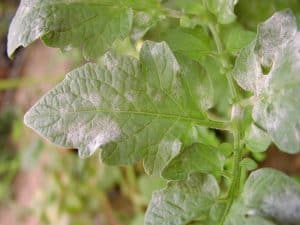 Among the diseases that most frequently attack fruit trees is powdery mildew.
Among the diseases that most frequently attack fruit trees is powdery mildew.
Its action produces white dots on the leaves that later turn into purple spots, thus ending its life.
In the case of flowers, a similar action occurs, preventing them from germinating and causing them to fall prematurely.
When they fall they are also purple.
If it attacks the fruits, the powdery mildew can cause them to fall before completing their cycle, making them impossible to consume.
Treatment for powdery mildew on mango:
- The most efficient treatment in this case is the use of sulfur-based fungicides.
- This can be applied in a wet or powdered version, depending on the conditions at the planting site.
- To ensure that the application does a better job, it is best to do it on days without much sun and with some humidity in the environment.
Apical mango necrosis
 Mango apical necrosis is a disease that is dedicated to damaging various areas of the plant, without reaching the fruit.
Mango apical necrosis is a disease that is dedicated to damaging various areas of the plant, without reaching the fruit.
In each affected area it generates a different effect, so it is worth recognizing them separately:
- On the leaves it produces spots that range from yellow to brown, which are located in the central area.
- On shoots it causes the tips to lose tissue and become soft and slimy.
- Stains also appear on the stems, but the most notable are the whitish exudations that are generated.
Now, it must be taken into account that the development of the disease occurs during cold and humid periods.
But, although in the spring and summer they do not affect as strongly, that does not mean that it is not there.
Treatment of apical necrosis of the handle:
- One of the treatments that help control the spread of the disease to healthy areas is conscientious pruning.
- However, chemical treatments based on copper oxychloride are also useful, especially to prevent the appearance of the disease.
anthracnose
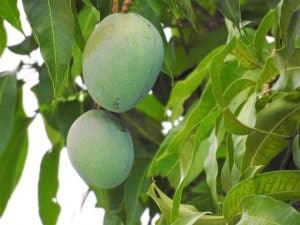 Anthracnose is a disease capable of damaging any part of the tree and, what is worse, the bacteria can remain alive throughout the year.
Anthracnose is a disease capable of damaging any part of the tree and, what is worse, the bacteria can remain alive throughout the year.
Its manifestation occurs through the fruits, producing brown spots when they are still immature.
However, at the moment in which the maturation process begins, the development of the disease becomes more latent.
It is even possible to notice the negative effects that it has produced after the harvest, which is why it is one of the most complex mango diseases.
In some cases the spots only affect the superficial layer of the fruit, but in others it reaches the pulp, darkening it.
Treatment of anthracnose in mango
- The treatment to deal with anthracnose cases is complex due to its work system.
- In the first instance , the ideal is to attack the disease with the use of fungicides directly on the affected plants.
- After that, the use of ecological fungicides is promoted for conservation during the time of harvest and commercialization.
- Sometimes the use of these actions prevents it from getting stronger.
shoot proliferation
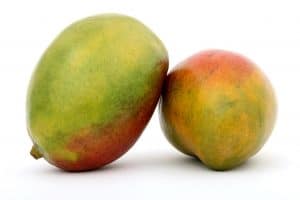 The good part about sprouting is that it is considered rare, the bad is that it affects sprouts.
The good part about sprouting is that it is considered rare, the bad is that it affects sprouts.
This affectation is evidenced by the appearance of small buds in the structure that end up damaging the appearance of the plant and its ability to flourish.
Although there may be cases of shoot proliferation that occurs in adult trees, the most normal thing is that these occur in still young plants.
Treatment for shoot proliferation in mango
- The treatment of the proliferation of shoots is quite simple, it is enough just to eliminate the areas where the shoots are poorly formed.
- Shoots should be included both for those for vegetative purposes and for those that produce flowers.
- To prevent plants from experiencing a second shoot proliferation experience, pruning debris should be completely removed.
- Mango trees tend to be very profitable at harvest time and are resistant to disease.
- However, everything will be based on the good care that is given to it, especially in times when temperatures become warmer.
Woodlouse
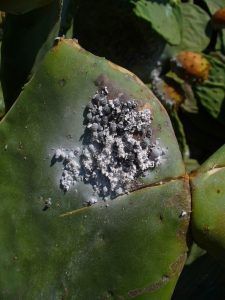 Its damage occurs both in the trunk and in leaves and fruits; In addition, they cause a molasses on the affected parts that favors the attack of various fungi. The fruits can suffer discolorations that depreciate their quality.
Its damage occurs both in the trunk and in leaves and fruits; In addition, they cause a molasses on the affected parts that favors the attack of various fungi. The fruits can suffer discolorations that depreciate their quality.
It is one of the most difficult pests to control since its body is covered with white waxy excrescences and chemical treatments are not very successful.
However, biological control can be carried out through natural enemies, such as Cryptolaemus montrouzieri, a predator of this type of insect.
The release is carried out fifteen days after any treatment, periodically in spring or early summer.
fruit fly
They are one of the worst enemies of the mango.
Almost all mango producing countries are attacked by one or more species of fruit flies.
For example: Dacus ferrugineus, in India; Dacus dorsalis, in the Philippines; Ceratitis capitata, in Caribbean and Mediterranean countries; Pink keratitis in South Africa, etc.
The females deposit the eggs in the pulp of the fruit, causing premature ripening and imminent rotting.
To control it, the use of traps with synthetic pheromones is effective in attracting adult specimens before they lay their eggs on the plants.
flower moths
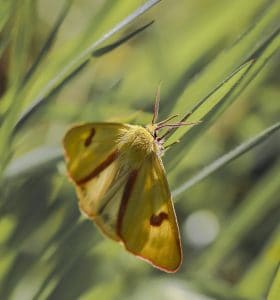 There are two types, depending on the variety of mango: Prays citri, for mangoes and citrus, and Cryptoblabes gnidiella, which attacks different types of trees, including vines, almonds, peaches and, of course, mangoes.
There are two types, depending on the variety of mango: Prays citri, for mangoes and citrus, and Cryptoblabes gnidiella, which attacks different types of trees, including vines, almonds, peaches and, of course, mangoes.
The caterpillars of both species attack the flowers, devouring their petals and stamens, and gnawing the ovaries with the consequent destruction of the fruits.
For its control, light traps and Bacillus thuringiensis can be used.
Dried mango
It is a disease caused by the fungus Ceratocystis fimbriata, and can cause the death of the tree. The symptoms are manifested in the aerial part with wilting and death of the leaves.
To control the disease , cleaning pruning and burning of withered branches is recommended.
How long does the mango live?
Mango trees are plants with an average lifespan of 60 years.
How long does it take to grow the mango?
It grows relatively quickly, which improves when it gets ideal care. In general, at the age of 8 you should already have a good structure formed.
How long does it take to produce fruit?
It is a plant that can bear fruit quite quickly, around 5 years after being sown from seed.
Can it be grown in a pot?
You can work in a pot and even obtain production from a plant, although this will not be as numerous as in the case of having it planted in the garden.
How many times does mango produce fruit?
It is possible to harvest crops once or twice a year, depending on the prevailing weather conditions.
Should the mango be pollinated to obtain fruit?
Yes, it is pollinated thanks to the intervention of insects that carry out the task of transferring the pollen from the flowers.
How cold can mango tolerate?
It is not particularly resistant to cold, although it will be able to survive temperatures that drop to 2° C when it is an adult specimen.
How many mangoes can be planted per hectare?
The number of mango trees established per hectare is 100 to 150 specimens depending on the chosen plantation framework.
What kind of fertilizer do mangoes need?
Mango fertilization will be carried out annually according to the specific needs of each stage, starting with nitrogen in spring.
Later, the maximum concentration

![Photo of Rubber tree or Ficus Elastica: [Planting, Care, Substrate and Irrigation]](https://www.complete-gardening.com/wp-content/uploads/2022/08/rubber-tree-or-ficus-elastica-planting-care-substrate-and-irrigation-390x220.jpg)

![Photo of Ambulia: [Care, Characteristics, Cultivation, Substrate and Pests]](https://www.complete-gardening.com/wp-content/uploads/2022/08/ambulia-care-characteristics-cultivation-substrate-and-pests-390x220.jpg)
